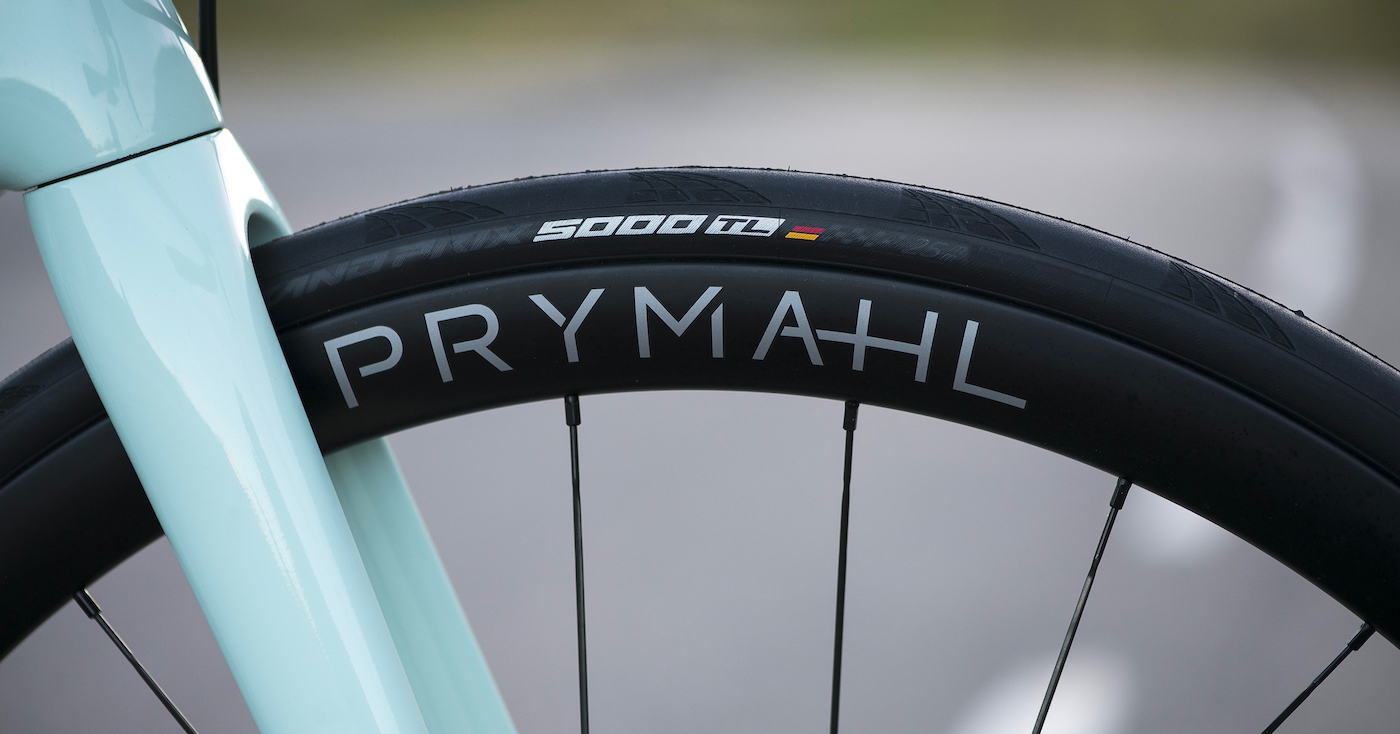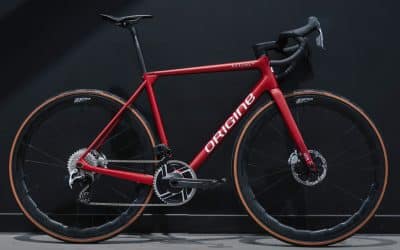Tires are the only point of contact between the bike and the ground. Proper pressure allows the cyclist’s force to be transferred without energy loss and also provides comfort. Therefore, it is essential to have quality tires, but more importantly, to inflate them to the correct pressure. Let’s look together at the factors to consider in determining the right pressure for your riding style.
Understanding the Units of Measurement: Bar or PSI
Bars and PSI are two units of measurement used to quantify pressure. Anglo-Saxon countries use PSI, while the reference unit in France is bars. There is a ratio of 14.5 between the two units. To convert PSI to bars, divide by 14.5. Conversely, to convert bars to PSI, multiply by 14.5.
Here is the conversion table between Bar and PSI:

Source : https://www.michelin.fr/
How to Accurately Inflate Your Bike Tires ?
It is essential to use a pressure gauge to accurately inflate your tires. These can be found on floor pumps, hand pumps, or compressors, also known as electric bike inflators.
Tire Pressure: What Criteria Should Be Considered?
Brand and Model of the Tire
Refer to the markings on the tire sidewall for the recommended pressure and, more importantly, the maximum pressure not to be exceeded. Depending on the carcass, rubber choice, tread pattern, or knobs, pressures can vary between brands and models.
Tire Width and Circumference
The larger the tire volume, the lower the necessary pressure. The volume increases with the circumference (650 vs 700) and the tire section (25mm for road racing, 45mm for gravel, and over 2” for MTB).
Total Cyclist-Bike Weight
The pressure should be proportional to the total weight it supports. If the cyclist is very light, the pressure should be reduced as less force is exerted on the tires. Conversely, if the cyclist is heavier or the bike is loaded with luggage, the pressure should be increased to prevent the tire from squashing against the ground.
Tubeless or Tube
A tubeless tire can accept a lower pressure than a tire with an inner tube. The absence of an inner tube eliminates the risk of “pinching” it on a stone or rock. However, a tubeless tire can still be damaged if you ride over sharp obstacles with low pressure.
Rim Type
Some carbon rims or hookless rims limit the maximum tire pressure. Refer to the technical sheet from your wheel manufacturer. Hookless rims generally limit the maximum pressure to 5 bars.
Type of Surface and Weather
A low-pressure tire will flatten across its width, providing better grip on wet, loose, or muddy terrain. Conversely, a low-pressure tire creates a lot of friction on smooth asphalt, slowing down progress and offering low performance. Generally, the higher the pressure, the better the efficiency, up to a certain point. If the surface is degraded and the tire is too inflated, it will bounce and lose traction and performance.
Desired Feel
Higher pressure reduces the contact area with the ground. High pressures give a sensation of increased speed during acceleration but do not absorb any road irregularities, making the tire hard and relatively uncomfortable. Conversely, a low-pressure tire will tend to compress when you stand on the pedals but will provide much comfort by absorbing road imperfections.
To what pressure should you inflate a road bike tire?

When all couriers used 700x23C tires, the usual practice was to divide the cyclist’s weight by 10 to obtain the pressure in bars. For example, a 60kg cyclist would inflate to 6 bars, and an 85kg cyclist to 8.5 bars.
To this empirical rule, you must add the tire manufacturer’s recommended pressures. For instance, the table below provided by Michelin recommends not inflating below 6 bars or above 8 bars.

Source : https://www.michelin.fr/
The trend in recent years has been to increase tire volume with widths ranging from 25mm to 30mm to enhance comfort without compromising performance. For a 25mm tire, it is recommended to use 0.5 bars less than for a 23mm tire. For a 28mm tire, you can reduce the pressure by more than 1 bar compared to 23mm tires.
Thus, a 70 kg cyclist could inflate to the following pressures:
| Tire width | Pressure (Bar) | Pressure (PSI) |
| 23 mm | 7,0 | 102 |
| 25 mm | 6,5 | 94 |
| 28 mm | 5,5 | 80 |
| 30 mm | 5,0 | 75 |
| 32 mm | 4,5 | 65 |
Gravel Tires: Recommended Pressures

Gravel tire pressures will be lower than on road for two reasons. First, the tire volume is larger, and second, better grip and vibration filtration are needed compared to road riding.
Examples of recommended pressures for a 75kg cyclist for light gravel riding:
| Tire Width | Pressure (Bar) | Pressure (PSI) |
| 30 mm | 4,5 | 65 |
| 35 mm | 3,5 | 50 |
| 40 mm | 3,0 | 44 |
| 45 mm | 2,5 | 36 |
In gravel riding, even more than on the road, you should adjust these recommendations to suit your terrain. You can reduce the pressure by up to 1 bar if conditions are wet and the terrain is rough.
What pressure should a mountain bike tire be inflated to?

In mountain biking, the tire widths are even larger and the pressures even lower. Pressures range from 1.5 bars for the lightest riders seeking grip to 3 bars for heavier riders seeking performance.
The easiest approach is to refer to the manufacturer’s table, such as the one provided below:

Source : https://www.michelin.fr
Conclusion: Each Cyclist Needs Their Own Tire Pressure
Beyond all these theoretical elements, trust your own feel. There is no right or wrong pressure. There are recommendations that you can adjust based on your preferences and riding sensations. Start with one of the recommended values, then add or subtract 0.5 bars to fine-tune your ideal pressure. Within a few rides, you will find the values that work best under different conditions.
The Origine team is composed of experts, cycling enthusiasts, and practitioners in all disciplines (road, gravel, cross-country, bikepacking, ultra-distance, DH, etc.). The articles written by the Origine team aim to inspire, advise, and inform you to support you in your cycling practice.


![[Guide] How to Get Started in Ultra-Cycling ?](https://cyclisthouse.origine-cycles.com/wp-content/uploads/2021/12/BikingMan-x-Origine-Cycles-1_adobespark-400x250.jpeg)
